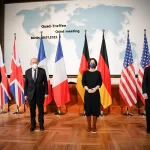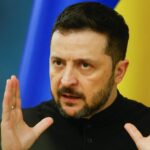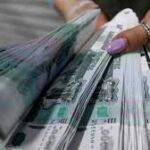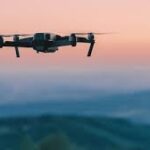Is Vladimir Putin a rational actor who weighs costs and benefits before making a momentous decision, such as whether to invade another country? Multiple scholars of Putin and his country think he is. If so, the third anniversary of his decision to order a full-scale invasion of Ukraine provides an appropriate opportunity to take stock of the costs and benefits of that invasion for Russia’s dictator and the country he rules. Before we do so, however, we must note that providing quantitative estimates of these costs and benefits is, predictably, very challenging, as it is difficult to find rigorous research that separates the impacts of the aggression on aspects such as, for instance, Russia’s economic output, from other factors that impact its GDP.1 It is also difficult to estimate the duration of these costs, given Russian authorities’ efforts to reduce them through measures such as the evasion of sanctions. While trying to estimate the “pros” and “cons” of Russia’s invasion for Russia, we, of course, acknowledge the horrendous costs which have been endured by Ukraine and Ukrainians, including hundreds of thousands in military casualties and thousands of civilian fatalities.2
Costs
Humanitarian impact: displacement, civilian deaths, veteran crime:
- Civilian losses: at least 388 individuals killed inside Russia as of December 2024.
- Internal displacement: At least 120,000 fled from Russia’s Kursk region alone (estimate in October 2024) with 3,000 staying to live in the Ukrainian-controlled parts of this region (estimate in February 2025). This internal population displacement and criticism of the authorities’ handling of these individuals’ plight creates additional social and political pressure on Putin’s regime.
- External displacement: 800,000 emigrated for economic or political reasons, 0.6% of Russian population.
- Violent crimes by veterans, including offenses committed by convicts who were released from jail on the condition that they would join combat on the Russian side for 6 months or more: at least 1,500 fell victims of these crimes at hands of veterans with 242 persons killed and 227 suffering grave bodily injures (estimate in September 2024).
Military personnel losses: Estimates of the number of Russian servicemen killed or wounded or missing vary, but most recent estimates show casualties of 700,000 or more, for a daily rate of 670 casualties, which is 50% less than the lower estimate of the casualties suffered by the PLA during the Sino-Vietnamese War of 1979, a comparable conflict.
Economic costs generated by Western sanctions: Russia remains the most heavily sanctioned country in the world in 2025. Over 20,000 sanctions have been levied by 50 countries, more than 80% of which were implemented following the February 2022 full-scale invasion of Ukraine, according to Forbes.
The punitive measures against Russia are estimated to have caused the following outcomes:
- An estimated $340 billion of Russian Central Bank reserves have been frozen.
- Russia’s financial sector suffered hundreds of billions of dollars in “direct losses” from sanctions, according to an internal Russian Finance Ministry document obtained in the fall of 2024 by Bloomberg.
- Russia’s energy sector lost an estimated $78.5 billion in exports earnings compared to a no-sanctions scenario from December 2022 to June 2024, according to the Kyiv School of Economics.
- A journalistic investigation estimated in March 2024 that Ukrainian strikes had rendered facilities which accounted for 1/6th of the production of gasoline and diesel fuels in Russia non-operational.
- As of Jan. 1, 2025, a total of 467 companies have completely exited Russia, according to the Kyiv School of Economics.
The punitive measures are likely to have contributed to the following outcomes:
- Russia’s GDP declined by some 2.3% in 2022 before growing by 3.6% in 2023.4 The IMF estimates that the Russian economy then grew by 3.8% in 2024, but this growth is expected to slow. The IMF’s latest World Economic Outlook foresees Russia’s economic growth slowing down to 1.4% in 2025 and 1.2% in 2026. We could not find any rigorously researched estimates of how much Russian GDP would have grown in a no-sanctions scenario.
The punitive measures are likely to have contributed to the emergence of the following financial costs:
- The sanctions are also likely to have contributed to emergence of a hole in Russia’s federal budget, with a deficit equivalent to 2.3% of GDP in 2022; in contrast, prior to the invasion, the Russian government had forecast a budget surplus of 1% for 2022. In 2023, the budget deficit hit 1.9% of GDP, according to the Russian finance ministry. And in 2024, the deficit of Russia’s federal budget was estimated at 1.7% of GDP, even though Russian authorities initially projected a deficit of only 0.9% of GDP in that year.
- As of Feb. 18, 2025, the Russian ruble was worth 0.01093 U.S. dollars, which represents an 8% decrease since Russia’s invasion of Ukraine.
- In 2022, Russia saw a notable spike in its inflation rate, which reached 13.75%. In 2023, it decreased to 5.86%, but then rose again in 2024, reaching 9.5%.
- As of late 2024, the Central Bank’s key interest rate was at a record-high 21%, making survival much harder for many civilian businesses in the country. In fact, the number of corporate bankruptcies in Russia increased by 26% in the first three quarters of 2024 compared to the same period of 2023, totaling 6,392, according to Interfax.
The punitive measures are likely to have contributed to the emergence of the following technological costs:
- As of October 2022, Russian semiconductor imports dropped 70% since the country became subject to broad Western sanctions and export controls after the invasion in February 2022. However, China subsequently helped to compensate for this decline.
- As of 2023, Russia planned to produce 1,000 passenger aircraft of all types by 2030, including 94 in 2023-2024. In reality, only 14 airliners were produced in those two years. The sanctions have also led to the seizure of 76 Russian airliners.
- Partially due to punitive reductions in exports of parts to Russia for car manufacturing, car production in Russia declined in 2022 by 60% compared to 2021, to 650,000. However, in 2023 already that production rebounded by 16% to 720,000. Car production kept growing in 2024, posting a growth of 33% with 1 million cars produced that year.
Expansion of what Russia sees as a hostile bloc to additional stretches of Russia’s land borders and territorial borders: Putin’s invasion of Ukraine has also created geopolitical costs for Russia that he could not possibly welcome. Not only has the war prompted existing NATO members to commit to an expansion of their military capabilities, but it has also prompted long-neutral Finland and Sweden to gain membership in the alliance. Sweden’s and Finland’s inclusion in NATO brought all of Russia’s Baltic Sea neighbors into the alliance and expanded the land border Russia shares with NATO members by 833 miles (1,340 kilometers). That expansion means only 488 miles (786 kilometers) separate southeastern Finland and Moscow as the crow flies. This cannot be good news for the country, whose leader stressed that one reason Russia cannot accept NATO’s expansion to Ukraine is that the time it would take for a NATO missile to fly from Kharkiv to Moscow, which are separated by the distance of 396 miles (638 kilometers) is 7 minutes (at this speed, it would take the same missile 8 1/2 minutes to fly the 488 miles that separate Finland and Moscow.)
Geopolitical costs: The Russian leadership’s inability and or/reluctance to divert resources from the war against Ukraine to help official allies has led to a dramatic decline in Russia’s influence over Armenia and Syria. The failure to come to the rescue of these allies could not help impacting the cost-benefit analysis by leaders of countries that are weighing whether to continue allied relations with Russia or to enter such relations.
Diplomatic semi-isolation: Russia faced significant isolation from Western countries, which have imposed sanctions targeting its economy and political elite, in 2022-2024. However, Russia has sought to strengthen ties with non-Western nations aiming to mitigate the impact of Western isolation. A sample of votes in 2022 on the Russian-Ukrainian war-related resolutions in the U.N. General Assembly (UNGA) shows that Russia has avoided full isolation, even though its reputation did suffer from its aggression against a sovereign state. About one-third of countries that voted on the following UNGA resolutions on the Russian-Ukrainian war failed to condemn Russian aggression:
- 03.02.2022-UNGA Resolution ES-11/1: “Aggression Against Ukraine”
- 141 yes; 5 no; 35 abstentions.
- 03.24.2022-UNGA Resolution ES-11/2: “Humanitarian consequences of the aggression against Ukraine”
- 140 yes; 5 no; 38 abstentions.
- 10.12.2022-UNGA Resolution ES-11/4: “Territorial integrity of Ukraine: defending the principles of the Charter of the United Nations”
- 143 yes; 5 no; 35 abstentions.
More recently, Trump’s decision to reverse his predecessor’s isolation strategy vis-à-vis Russia indicates that even Russia’s semi-isolation may soon be over. In fact, Feb. 24, 2025, saw the U.S. join Russia and 16 other nations to vote against a UNGA resolution condemning Russia’s invasion of Ukraine. The resolution passed with 93 votes in favor. China abstained, alongside 64 other countries, according to FT’s count.
Russia’s reputation as a world-class military power has been damaged: In advance of its second assault on Ukraine in 2022, Russia spent months in preparation for a rapid multi-pronged offensive launched not only from its positions in Crimea and the Donbas, but also from the territory of its ally Belarus. Less than two months following the Feb. 24, 2022, invasion, however, the Russian forces found themselves in retreat.
While we have no way of knowing for sure, it is unlikely that Putin and his generals expected such a setback. If they had, they would not have told members of the invading formations to pack their dress uniforms. That even some prime Western experts on the Russian military—who are arguably less susceptible to Potemkin narratives plied by some of Russia’s less scrupulous commanders—overestimated the capabilities of Russia’s war machine reaffirms the likelihood that Putin himself suffered from excessive optimism. They were not alone. Two days before the invasion, then U.S. Chairman of the Joint Chiefs of Staff Gen. Mark Milley gave visiting then Ukrainian Foreign Minister Dmytro Kuleba a “you’re going to die” speech. “They’re going to roll into Kyiv in a few days,” Milley told Kuleba, according to The New York Times.
Territorial loss: On Aug. 6, 2024, Ukraine undertook a surprise invasion of Russia’s Kursk region, soon capturing 470 square miles of Russia, including the city of Sudzha. Ukraine still controls 172 square miles of its original salient in Kursk.













